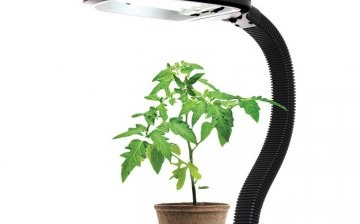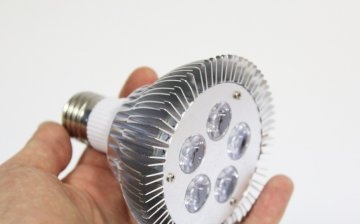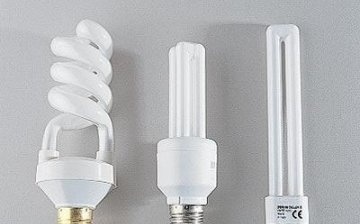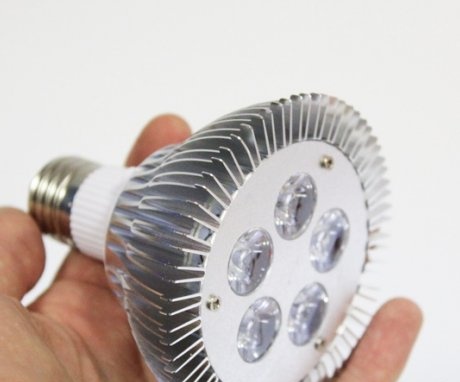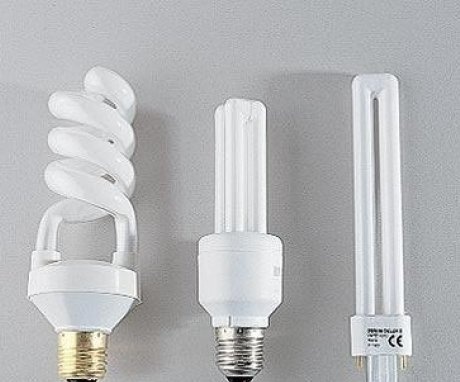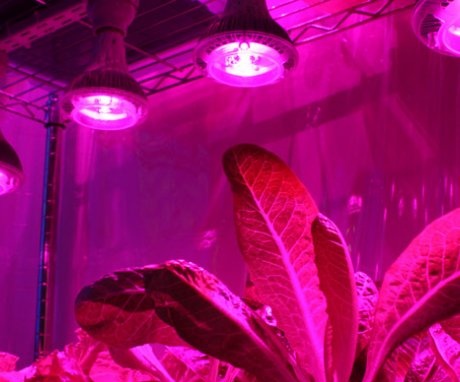Lighting for seedlings - making the right choice
Experienced gardeners already know what to grow seedlings it is very difficult without the help of additional illumination. Plants either stretch out or wither. This happens due to a lack of lighting. Especially the seedlings are stretched out in rooms oriented to the north or west. In such rooms, there is very little light, plus in spring the daylight hours are quite short. Plants do not have enough radiation useful for her - blue and red
Therefore, the gardener needs to know everything about the additional light source for growing seedlings. It is important to navigate correctly in the range of lamps, to know how to use them and which devices should not be used in the backlight at all. All this useful information contains a brief overview to help gardeners.
Content
- The benefits of lighting seedlings
- Types of lighting fixtures: choosing the right one
- The nuances of installing lamps for seedlings
- Gardening tips for lighting seedlings
The benefits of lighting seedlings
Everyone knows that any plant needs not only water and trace elements, but also light for successful growth. Without it, nothing will grow, these are the laws of nature. When crops are cultivated outdoors, few people think about the beneficial lighting of the plants. Everything happens naturally thanks to the invaluable sunlight. But when it comes to growing seedlings at home, the gardener begins to think about the importance of lighting. Sunlight emits different kinds of radiation: red, orange, yellow, green, cyan, blue and violet.
In order for the seedlings to grow healthy and strong, it must be provided with blue and red radiation.
These are the main spectra required for plant germination. Blue light is especially important, as it is he who participates in the "greening" of leaves and stems. By installing a lamp with the indicated light emissions, the gardener can easily grow seedlings as soon as possible. Many people believe that normal daylight from a window is sufficient for breeding seedlings. But it is not so. The fact is that the seeds usually sown for seedlings in early spring, when daylight hours are still short. It is not enough for the normal development of sprouts. You often have to observe on the windowsills elongated and pale seedlings. This happens precisely because of the lack of useful lighting, and not because of early disembarkation. If you install lamps that are useful for plants over the containers, this will not happen. The seedlings will grow normally without stretching or losing their leaf color.
Red and blue radiation for at least 8 hours is required for seedlings. The issue of lighting in rooms where windows face north or west is especially acute. There is very little light. Therefore, the question of whether additional lighting is needed for seedlings disappears by itself. It is necessary. Having figured out what useful lighting is and what role it plays in growing seedlings, you can already start choosing lamps.
Types of lighting fixtures: choosing the right one
Knowing exactly what radiation is needed for seedlings, the gardener will no longer install an ordinary incandescent light bulb - it will only heat and burn the seedlings.Such a lamp does not provide adequate lighting. When choosing, rely on the following criteria:
- The lighting fixture must emit blue and red radiation
- The lamp should not warm up (its task is to illuminate)
- Uniform illumination plane
- The number of lumens and lux in the characteristics of lamps
The last criterion is very important, since it is this factor that will show whether the plant will be sufficiently lit. Typically, you need at least 8000 lux to illuminate your seedlings. That is, one light bulb is usually not enough for lighting. Plants will stretch towards the light.
Therefore, it is important to read all the characteristics of the lamps, calculate their power and lighting depending on the area.
The modern market offers a large number of lighting fixtures for seedlings. It is rather difficult to decide on the choice, but having understood the features of the lamps, the choice will be much simpler. With an incandescent light bulb, everything is already clear - it does not fit. The following categories of lighting fixtures can be used to illuminate plants:
- The first type of lamp is primarily popular due to its energy saving. After all, the lamp does not burn for one or two hours, but for all eight or more. Energy saving lamps make up for the loss of light. Many gardeners resort to them and do not complain about pulling out seedlings. This is perhaps the most economical and simple type of plant illumination. However, do not forget about the characteristics of the light of such a lamp. Usually one lamp is not enough even for a standard window sill.
- Fluorescent lamps have also become very popular for illuminating seedlings. Choose lamps with designations of 4,500, 5,000 or 6,000 K. These are the indicators that are considered effective in crop production. The devices are economical and provide enough light. However, the lighting is too diffuse, it diverges in all directions. Therefore, many gardeners focus light with reflectors - white Whatman paper or foil. Screens are installed along the edge of containers or areas with seedlings. This will focus the light on the plants. Lamps are suspended from chains or other devices that allow you to adjust the height of the illumination - the distance from the lamp to the plants. A fluorescent lamp is suitable for illuminating seedlings in the case when it is not possible to purchase special phyto lamps.
- Phytolamps are designed specifically for lighting seedlings and adult plants in greenhouses. They can be found in large numbers, in different types and types. Here you should start from the following criteria: the size of the lamp (its dimensions), the power of the device and the number of lumens and lux.
Please note that the criterion for the type of radiation disappears automatically. In such lamps, useful spectra are taken into account first of all. If a gardener buys a phyto lamp, this does not mean that all the rules for calculating power and lighting disappear. Here, you should also take into account the area of useful lighting and, based on this, purchase the required number of lamps. The most effective lighting devices are considered
- Metal halide. These lamps are good because they have an increased light transmission coefficient. Moreover, the design includes not only mercury, but also metal iodides. That is, these lamps are superior in efficiency to their counterparts - mercury lamps. Installing them as a backlight for seedlings will be a great choice.
- LED bulbs. These lamps are considered the most successful lighting solution for seedlings. They consume little energy and the efficiency is enormous. Moreover, it is convenient to place them over the area of a greenhouse or an ordinary room. These are small devices whose emission spectrum can be varied. These are the lamps used by garden centers, nurseries and greenhouses.
- Sodium. They are slightly different from the rest in that their spectrum is more red. It's great for cultivation seedlings and adult plants. Moreover, recently you can find lamps with a mirror finish. Such lighting fixtures will last much longer.
Of the many types and types of lamps, LED and fluorescent lamps can be distinguished. It is to them that experienced gardeners mainly resort. In addition to the correct choice of lamps, you need to know the nuances of installing the backlight.
The nuances of installing lamps for seedlings
When installing lamps, always consider the wattage and illumination of the lighting fixture. For example, by hanging lamps at a distance of 30 cm from the plants, you can get elongated stems as a result. This suggests that there was not enough light. Therefore, the lamp should be lowered lower. If you notice the brown edges of the leaves, then the lamp is hanging too close - the distance between the plant and the device must be increased.
Also, do not hope that a single light bulb will be able to fully make up for the necessary lighting. On a small table with seedlings, for example, you need to install about three lamps, depending on the power and the number of suites. It is undesirable to install the backlight on the side, for example, against a wall. The sprouts will bend and reach towards the light source. The result is an unripe and frail seedling.
The optimal position of the lamp will be vertical - the backlight should be from above or from all sides at the same time.
If the lighting is too diffuse, as is the case with a conventional fluorescent lamp, it is recommended to focus the light yourself. For this, white Whatman paper or sheets with a reflective surface are installed behind the plants. So the seedlings will be highlighted from all sides, and not just from above.
Remember that the seedlings should be lit for at least 8 hours, but do not leave the lights on all day. Organize the plants with a typical summer daylight hours - 16-18 hours of light and several hours of the night. Thus, the seedlings will grow as if they were outdoors in the summer.
Gardening tips for lighting seedlings
Artificial lighting is not everything. In addition to useful light, you must not forget about the usual lighting rules. For example, if the air temperature at night does not drop below 5 °, the seedlings should be taken outside or on the balcony for hardening during the day. Only real sunlight will help the plant to develop correctly and in a timely manner. Take the seedlings out for a walk as often as possible. So there will be no need to waste electricity, and the plants will receive normal sunlight, which has not yet been canceled in the cultivation of crops.
Artificial illumination is relevant for those who begin to deal with seedlings in February, when the daylight hours are very short.
During this period, you really can't do without lamps. Despite the presence of additional light, try to place containers with seedlings on the south side of the house or apartment. Even a couple of hours of sunshine will do a lot more for the plant than four hours from a lamp. South and east windows will be the best place for growing seedlings.
Having all the useful information about additional lighting for plants, the gardener will no longer be mistaken when choosing a lamp. Healthy light and proper care will help you grow dense, healthy and green seedlings!
More information can be found in the video.




